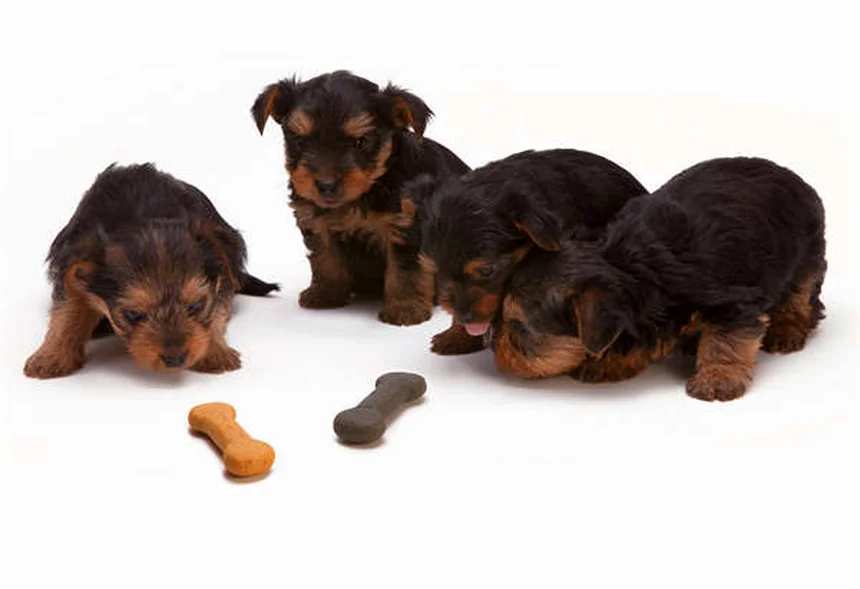Advertisement
How do dogs get fleas? The answer is: dogs can pick up fleas from almost anywhere - from your backyard to your best friend's couch! As a dog owner myself, I've learned the hard way that these tiny pests are masters of invasion. Your pup can get fleas from grass, other animals, or even from you bringing them home on your clothes. The good news? With proper prevention like NexGard® PLUS and regular checks, you can keep your furry friend flea-free. Let me walk you through the 7 most common ways dogs get fleas and exactly what you can do about it.
E.g. :How to Help Traumatized Pets: 5 Proven Healing Techniques
- 1、Meet the Tiny Troublemakers: Fleas 101
- 2、The Great Flea Invasion: 7 Ways Your Dog Gets Fleas
- 3、Flea Prevention: Your Game Plan
- 4、Oh No! My Dog Has Fleas - Now What?
- 5、Flea FAQs: What You Really Want to Know
- 6、The Hidden World of Fleas: More Than Just Itchy Bites
- 7、Beyond the Itch: Health Risks You Might Not Know About
- 8、Flea Prevention Myths Debunked
- 9、The Future of Flea Control: What's Coming Next?
- 10、Your Flea-Fighting Toolkit: Must-Have Items
- 11、FAQs
Meet the Tiny Troublemakers: Fleas 101
What exactly are these pesky fleas?
Picture this: tiny, dark brown parasites about the size of a sesame seed (1/8-inch or smaller) that love to throw parties in your dog's fur. These uninvited guests don't just crash the party - they bite your pup's skin and feast on their blood. Talk about rude house guests!
Now here's something that might surprise you: fleas aren't just annoying, they can actually cause serious health issues. They can transmit tapeworms and diseases like bartonellosis to your furry friend. That's why I always tell my friends with dogs to make flea prevention a top priority. Products like NexGard® PLUS are great because they protect against multiple threats - fleas, ticks, heartworm disease, roundworms, and hookworms - all in one tasty chewable.
Where do these little vampires hang out?
Fleas are basically the ultimate party animals - they'll set up shop anywhere warm and humid. Think tall grass, wooded areas, or your cozy carpet. Did you know that while they prefer dogs, fleas won't say no to biting humans too? And here's a gross fact: if you accidentally swallow an infected flea (maybe while eating something off the floor - no judgment!), you could get tapeworms too!
The Great Flea Invasion: 7 Ways Your Dog Gets Fleas
 Photos provided by pixabay
Photos provided by pixabay
1. The great outdoors: Nature's flea motel
Ever seen your dog rolling in the grass with pure joy? That adorable moment could turn into a flea fiesta! Tall grass and wooded areas are like five-star hotels for fleas. When your pup plays outside, these jumpy little critters can easily hitch a ride on their fur.
Here's a fun fact that's not so fun: fleas can jump up to 13 inches - that's 150 times their own height! If humans could do that, we'd be jumping over buildings like Superman. This incredible jumping ability makes it super easy for fleas to move from grass to your dog's coat.
2. Doggy playdates gone wrong
Fleas are the ultimate social butterflies - they love moving from one dog to another. If one dog at the park has fleas, consider it an open invitation for all dogs present. I've seen cases where a single playdate turned into a full-blown flea infestation for multiple dogs!
3. The multi-pet household shuffle
Got cats or ferrets at home? They can be secret flea carriers too! Fleas don't discriminate - they'll happily jump from your cat to your dog or vice versa. Shared bedding and carpets become flea highways in multi-pet homes.
 Photos provided by pixabay
Photos provided by pixabay
1. The great outdoors: Nature's flea motel
Here's something that might make you check your shoes: you could be bringing fleas home without knowing it! These tiny hitchhikers can cling to your clothes or shoes after walks. Visitors can unknowingly transport them too. It's like playing biological Russian roulette with your dog's comfort!
5. Wildlife encounters
Raccoons, coyotes, and foxes aren't just cute forest friends - they're often flea taxis! If your dog sniffs around areas where these animals hang out, they're basically swiping right on potential flea matches.
6. Travel troubles
Taking your pup on vacation? Fleas love travelers too! Even if your area is flea-free, trips to warm, humid places can expose your dog to these pests. That hiking adventure might come with some unwanted souvenirs.
 Photos provided by pixabay
Photos provided by pixabay
1. The great outdoors: Nature's flea motel
We've all been there - life gets busy and you forget a dose of flea prevention. But here's the thing: fleas never take vacations. One missed dose could be all the opportunity they need to invade.
Flea Prevention: Your Game Plan
Choosing your flea-fighting weapons
When it comes to flea prevention, you've got options. Check out this comparison of popular methods:
| Type | How It Works | Frequency | Bonus Protection |
|---|---|---|---|
| Oral (chewables) | Works from inside out | Monthly | Often covers multiple parasites |
| Topical | Applied to skin | Monthly | Some protect against ticks |
| Collar | Worn continuously | Lasts months | Varies by brand |
Products like NexGard® PLUS are my personal favorite because they're easy to administer (dogs think they're treats!) and provide comprehensive protection. But remember - what works for one dog might not work for another. Your vet is your best ally in this battle!
Regular checks: Your secret weapon
Even with perfect prevention, you should still play detective with your dog's coat. Here's how:
• Use a flea comb - it's like a metal detector for pests
• Look for "flea dirt" (those black specks that look like pepper)
• For thick-coated dogs, run your fingers through their fur to feel for bumps
Oh No! My Dog Has Fleas - Now What?
First response: Stop the party
Discovering fleas on your dog can feel like finding out your house has been hosting a rave without your knowledge. But don't panic! Here's your action plan:
1. Fast-acting treatment: Use a vet-approved product that kills fleas quickly
2. Flea bath: Special shampoos can help eliminate adult fleas
3. Prevention: Start a year-round prevention plan immediately
Cleaning house: The flea eviction notice
Fleas in your home? Time to channel your inner cleaning superhero:
• Vacuum like there's no tomorrow - floors, furniture, everywhere!
• Wash all pet bedding in hot water
• Consider room sprays (but check with your vet first)
• Don't forget the car if your dog rides with you!
Flea FAQs: What You Really Want to Know
Can I get fleas from my dog?
Here's a relief: while fleas might bite humans, they can't live on us long-term. But those bites can be itchy and annoying. And remember that tapeworm risk if you accidentally swallow a flea - maybe skip tasting your dog's food!
How did my indoor dog get fleas?
Think fleas can't get inside? Think again! These tiny ninjas can sneak through screens, cracks, or hitch rides on your clothes. That's why even indoor dogs need protection - fleas are basically the ultimate uninvited house guests.
Why do fleas love dogs so much?
To a flea, your dog is an all-you-can-eat buffet with free heating! Dogs provide warm bodies, constant movement, and delicious blood meals. It's like fleas won the lottery every time they find a dog.
Remember: NexGard® PLUS should be used carefully in dogs with neurological issues. Side effects might include diarrhea or vomiting. Always test for heartworms before starting prevention. For complete info, consult your vet or call 888-637-4251.
NexGard® is a registered trademark used under license. ©2025 Boehringer Ingelheim Animal Health USA Inc. All rights reserved.
The Hidden World of Fleas: More Than Just Itchy Bites
Flea life cycle: Nature's tiny survival machines
Did you know fleas have been around for at least 165 million years? That's older than the dinosaurs! These little survivors have perfected their life cycle to ensure they stick around no matter what. From egg to larva to pupa to adult - each stage presents unique challenges for pet owners trying to eliminate them.
Here's something that'll make you scratch your head: only about 5% of a flea population are adults you can see. The other 95% are eggs, larvae, and pupae hiding in your environment. That's like having 20 invisible roommates for every flea you spot! This explains why flea problems seem to explode overnight - by the time you notice adults, there's already a hidden army waiting to emerge.
The flea's superpowers: More impressive than you think
Fleas don't just jump high - they're basically insect superheroes with multiple powers:
• Extreme durability: Their hard outer shell makes them resistant to squishing
• Houdini-like escape skills: Their flattened bodies let them slip between fur strands
• Ninja stealth: They move so fast you often can't see them until they've bitten
Ever tried catching a flea between your fingers? It's like trying to grab a greased watermelon seed! Their bodies are perfectly designed for life in fur, with backward-facing spines that make them nearly impossible to remove by brushing alone.
Beyond the Itch: Health Risks You Might Not Know About
Flea allergy dermatitis: When bites become dangerous
Some dogs develop an allergic reaction to flea saliva that turns simple bites into major health issues. We're talking severe itching, hair loss, and painful skin infections. I've seen cases where dogs scratch so much they develop open wounds - it's heartbreaking!
What's wild is that just one flea bite can trigger this reaction in sensitive dogs. That's like having a peanut allergy but reacting to just smelling peanut butter! If your dog seems extra itchy after flea exposure, ask your vet about allergy testing and special shampoos that can help soothe their skin.
The parasite connection: More than just fleas
Fleas are like the Uber drivers of the parasite world - they transport other nasty hitchhikers. The most common? Tapeworms. When dogs groom themselves and swallow an infected flea, the tapeworm gets a free ride to its new home in your pup's intestines.
Here's a gross-but-true fact: you might first notice tapeworms from those rice-like segments wiggling around your dog's rear end. Not exactly the kind of surprise anyone wants! Regular flea prevention breaks this cycle before it starts, protecting your dog from multiple parasites at once.
Flea Prevention Myths Debunked
"My dog doesn't go outside, so we don't need prevention"
Let me tell you about my friend's indoor-only cat that somehow got fleas. Turns out they hitched a ride on her jeans after walking through the park! Fleas are expert stowaways that don't care about your pet's lifestyle. Indoor pets need protection just as much as outdoor adventurers.
Think about all the ways fleas can sneak inside:
• On your clothes or shoes
• Through open windows or screens
• Via visiting pets or wildlife near your home
• Even in used furniture or rugs!
"Natural remedies work just as well"
While we all love natural solutions, here's the hard truth: most DIY flea treatments just don't cut it. Essential oils might smell nice, but they often fail to kill all life stages of fleas. And some can even be toxic to pets!
Check out this comparison of flea treatment effectiveness:
| Method | Kills Adults | Kills Eggs/Larvae | Duration |
|---|---|---|---|
| Prescription meds | Yes | Yes | 1 month |
| Diatomaceous earth | Sometimes | No | Few days |
| Essential oils | Maybe | No | Few hours |
See what I mean? While natural options might help a little, they're no match for vet-recommended preventatives when it comes to full protection.
The Future of Flea Control: What's Coming Next?
High-tech solutions on the horizon
Scientists are working on some seriously cool flea-fighting tech. Imagine a collar that changes color when it detects flea saliva on your pet! Or smart home systems that alert you when flea activity spikes in certain rooms. The future of pest control looks brighter (and itch-free) every year.
One promising area is targeted flea treatments that disrupt specific flea behaviors without affecting pets. Think of it like giving fleas the wrong GPS coordinates so they can't find your dog! These next-gen solutions aim to be even safer while being more effective than current options.
Climate change and flea populations
Here's something that might surprise you: warmer winters mean longer flea seasons. Many areas that used to have natural winter die-offs now see year-round flea problems. That's why vets increasingly recommend 12-month prevention plans instead of seasonal treatments.
Did you know flea populations can increase by up to 70% in areas with just 2°F temperature rises? That's like turning your mild climate into flea paradise! As weather patterns shift, we'll need to adapt our prevention strategies accordingly.
Your Flea-Fighting Toolkit: Must-Have Items
Beyond medications: The supporting cast
While preventatives are your first line of defense, these tools complete your anti-flea arsenal:
• Flea comb: The detective's tool for spotting early infestations
• Vacuum with HEPA filter: Traps flea eggs instead of blowing them around
• Washable pet beds: Because hot water kills what chemicals miss
• Outdoor nematodes: Tiny worms that eat flea larvae in your yard
I keep a "flea emergency kit" ready at all times - it's saved me countless headaches when spotting early signs of trouble. Think of it like a first aid kit, but for pest control!
When to call in the pros
Sometimes DIY just isn't enough. If you're seeing fleas despite regular prevention, or if your pet has severe reactions, it's time to bring in the cavalry. Professional exterminators have tools and knowledge most of us don't, like industrial-strength flea bombs and precise treatment plans.
How do you know it's pro time? Look for these signs:
• Fleas reappearing within days of treatment
• Multiple pets in the home all infested
• Family members getting bitten regularly
• Visible flea dirt throughout the house
E.g. :How Do Dogs Get Fleas? | PetMD
FAQs
Q: Can my indoor-only dog really get fleas?
A: You'd be surprised how often I hear this question! Yes, even indoor dogs can get fleas. Here's how it happens: those sneaky little bugs can hitch a ride on your clothes or shoes, slip through window screens, or even crawl through tiny cracks in your home's foundation. I've seen cases where indoor cats brought fleas to the family dog! That's why vets recommend year-round prevention for all pets - because fleas don't care if your dog is an indoor princess or an outdoor adventurer. The best approach? Use a vet-approved preventive like NexGard® PLUS and do regular flea checks, just to be safe.
Q: How often should I check my dog for fleas?
A: As someone who's dealt with flea outbreaks before, I recommend checking your dog at least once a week, especially during warmer months. Here's my routine: I use a fine-toothed flea comb (you can get one at any pet store) and go through my dog's fur, paying special attention to warm areas like behind the ears and under the legs. Look for tiny dark brown bugs or "flea dirt" - those little black specks that look like pepper. If you're super busy like me, even a quick finger-comb through their coat while watching TV can help catch problems early. Remember: catching fleas fast means less chance of a full-blown infestation!
Q: Are flea collars or oral medications better?
A: This is a great question I get from fellow dog owners all the time! Both options have pros and cons. Flea collars are convenient and last months, but some dogs develop skin irritation. Oral medications like NexGard® PLUS are my personal favorite because they're mess-free (no greasy spots!) and dogs usually think they're treats. Plus, many oral options protect against other parasites too. The best choice depends on your dog's lifestyle - for example, if your pup swims a lot, a collar might lose effectiveness. My advice? Talk to your vet about what works best for your specific situation. What matters most is that you're using something consistently!
Q: Can fleas make my dog really sick?
A: Unfortunately, yes - and this is why I'm so passionate about prevention. Beyond just being itchy and annoying, fleas can cause some serious health issues. They can transmit tapeworms (yuck!) and diseases like bartonellosis. Some dogs develop flea allergy dermatitis, which makes them miserably itchy. In severe cases, especially with puppies, a bad flea infestation can even cause anemia from blood loss. That's why I always tell my friends: preventing fleas isn't just about comfort - it's about health. Using a quality preventive and checking regularly can save your dog from these risks.
Q: How quickly should I act if I find fleas?
A: Act immediately - fleas multiply crazy fast! Here's what I do at the first sign of fleas: 1) Give a fast-acting flea treatment (your vet can recommend one), 2) Wash all pet bedding in hot water, 3) Vacuum everywhere - and I mean everywhere - then throw away the vacuum bag. The life cycle of fleas means you'll need to keep up treatments for at least 3 months to break the cycle. Don't forget to treat all pets in the house simultaneously! From experience, the sooner you tackle the problem, the easier it is to control. Waiting even a few days can let the situation get out of hand.

